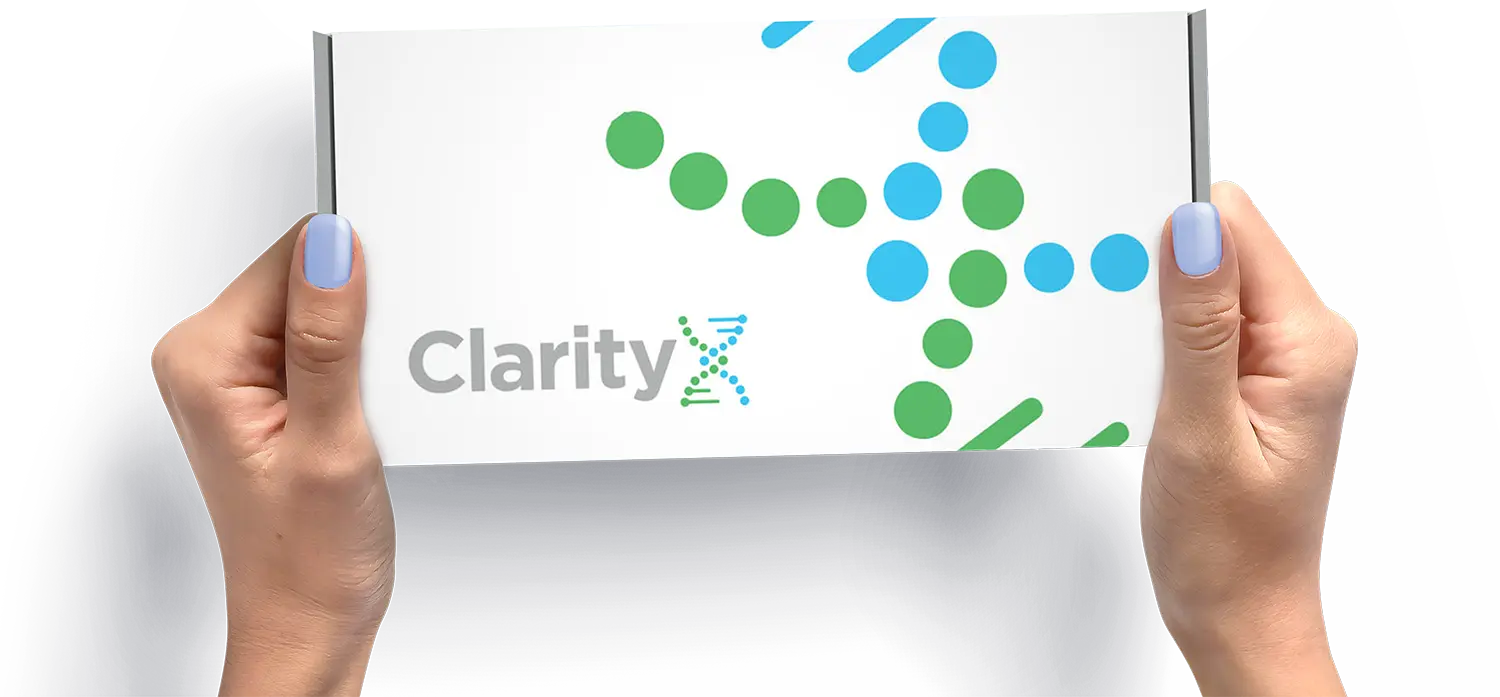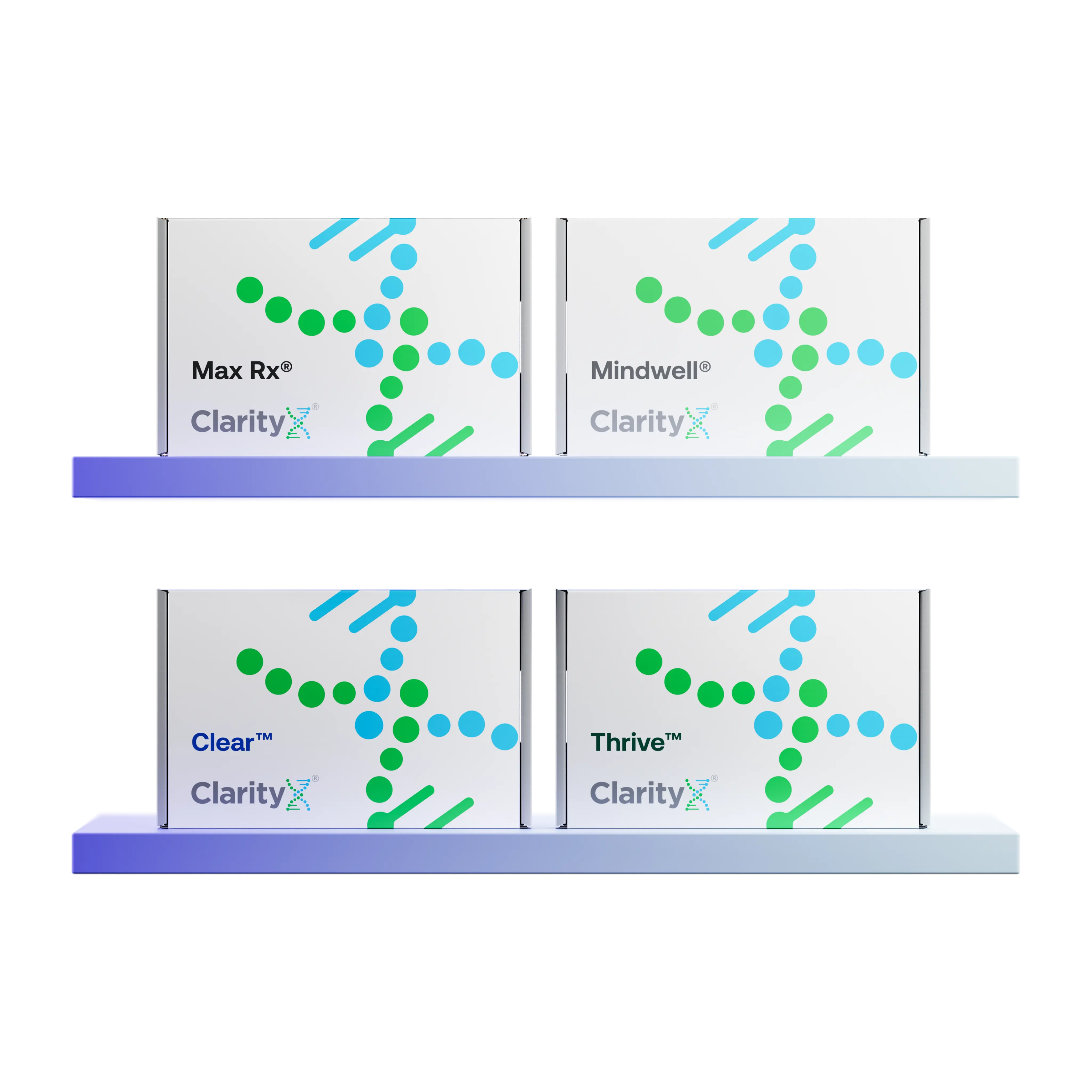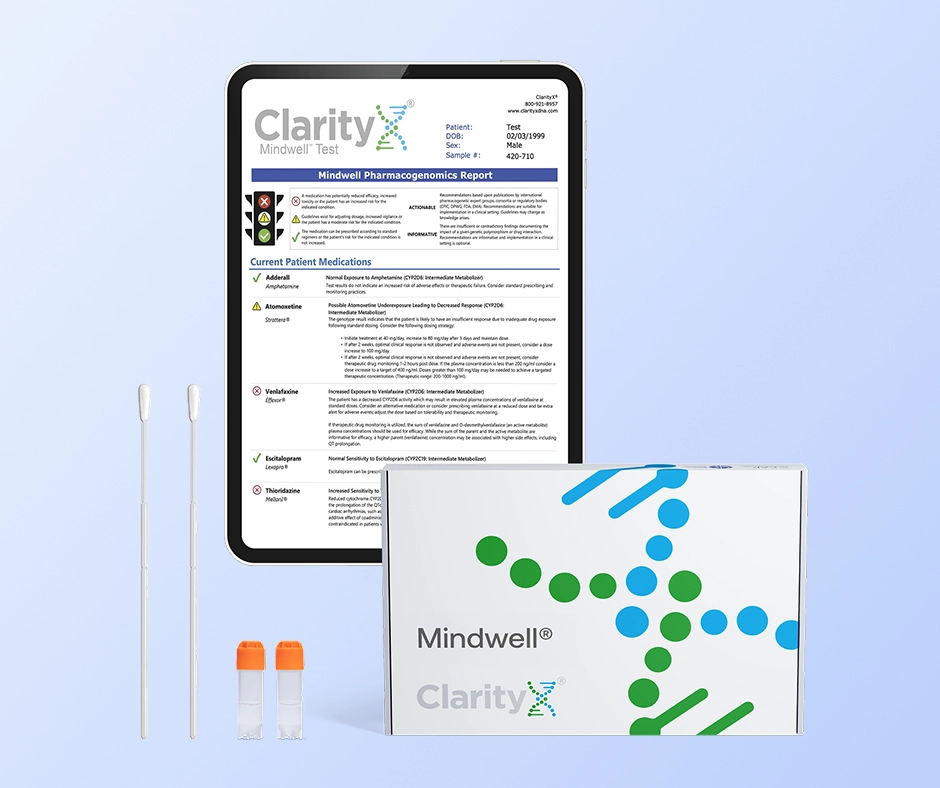Key Highlights
- While there are three officially recognized presentations of ADHD, a popular (but unofficial) model proposes seven unique types.
- This 7-type model, proposed by Dr. Daniel Amen, is not used for clinical diagnosis but helps many people understand their personal experience.
- Symptoms vary by type, from classic hyperactivity and inattention to over-focus, anxiety, or mood-related challenges.
- Understanding your specific symptom profile is key to finding a personalized treatment plan.
- Pharmacogenetic testing (like the ClarityX Mindwell test) can help personalize medication management by analyzing your DNA.
Introduction
When you hear "attention deficit disorder," you might picture a child who can't sit still. However, this mental health condition is not just for kids, and it looks different in everyone. For many adults, ADHD symptoms present unique challenges that affect work, relationships, and daily life. Recognizing that ADHD is not a one-size-fits-all condition is the first step toward understanding how it might be impacting you and finding the right support.
What is ADHD?
Attention-deficit/hyperactivity disorder (ADHD) is a common neurodevelopmental condition that affects your ability to focus, control impulses, and regulate emotions. While many people are diagnosed in childhood, the symptoms often persist and evolve into adulthood.
The experience of ADHD can change significantly with age. In childhood, hyperactivity is often physical running and fidgeting. As an adult, this energy may turn inward, showing up as constant mental restlessness, a drive to stay busy, or difficulty relaxing. Because adult symptoms can appear so different, they are sometimes mistaken for carelessness, immaturity, or other mental health issues. A formal diagnosis from a mental health professional is a key step toward effective management.
ADHD Symptoms
Regardless of the specific type, there are several core symptoms that most adults with ADHD experience. These foundational challenges are what impact daily functioning the most, often creating a cycle of frustration and stress. Recognizing these patterns in your own life can be an eye-opening first step.
The core symptoms fall into three main categories: inattention, hyperactivity, and impulsivity.
- Inattention: This includes a short attention span for routine tasks (like chores or paperwork), chronic procrastination, difficulty finishing projects, and ongoing disorganization.
- Hyperactivity: In adults, this often manifests as internal restlessness, an inability to relax, or a need to be constantly busy.
- Impulsivity: This can show up as blurting out comments, making rash decisions, poor time management, or consistently running late.
Exploring the 7 Types of ADHD in Adults
While clinical diagnosis officially recognizes three presentations of ADHD, psychiatrist Dr. Daniel Amen has proposed a popular model identifying seven different types. This framework helps explain why ADHD can look so different from person to person. It explores variations ranging from classic symptoms to more complex forms like Ring of Fire or Temporal Lobe ADHD.
It's important to remember that this 7-type model is a theoretical framework, not a medically recognized diagnostic tool. However, many people find it incredibly helpful for naming their experiences and understanding their unique challenges.
Classic ADHD: Features and Challenges
Classic ADHD is the presentation most people think of, combining the core symptoms of inattention, impulsivity, and hyperactivity. If you have this type, you might feel like you are constantly "on the go," driven by an internal motor that makes it hard to slow down. You might struggle with interrupting others, acting without thinking, or feeling chronically restless.
- Key features: Difficulty paying attention, feeling restless, making careless mistakes, and procrastination.
Inattentive ADHD: Recognizing the Signs
Inattentive ADHD, once known as Attention Deficit Disorder (ADD), stands out because hyperactivity is absent. Instead, the primary challenges are internal. If you have this type, you might be described as a daydreamer or someone who seems "spaced out." These inattentive symptoms can be subtle, leading others to misinterpret your behavior as laziness.
- Key features: Frequently losing focus, struggling to complete projects, appearing forgetful, and misplacing items.
Over Focused ADHD: Key Traits and Patterns
Contrary to the typical image of distractibility, Over Focused ADHD involves getting "stuck." People with this type find it difficult to shift their attention from one thing to another. This can manifest as getting locked into negative thought patterns, fixating on a task, or holding grudges. This rigidity can strain relationships and make teamwork challenging.
- Key features: Becoming stuck in negative thoughts, difficulty transitioning between activities, and an argumentative nature.
Temporal Lobe ADHD: Unique Symptoms and Effects
This proposed subtype is linked to issues in the temporal lobe of the brain, an area crucial for memory, emotional regulation, and language. This type is often marked by irritability, mood swings, and memory issues. For adults with Temporal Lobe ADHD, impulsive behaviors can take a darker turn, such as sudden anger, anxiety, or even paranoid thoughts.
- Key features: Mood swings, high irritability, trouble remembering information, and episodes of sudden fear or dark thoughts.
Limbic ADHD: Emotional Impact and Behaviors
Limbic ADHD is characterized by its significant emotional impact, thought to stem from issues in the brain’s limbic system (the emotional center). This can lead to chronic low mood, low energy, and feelings of hopelessness, and is often mistaken for depression. If you have this type, you might struggle with persistent sadness, negative self-esteem, and social isolation.
- Key features: Chronic low energy, persistent feelings of sadness or worthlessness, and loss of interest in daily life.
Ring of Fire ADHD: Intensity and Complexity
This type gets its name from a pattern of widespread overactivity across the brain. This “ring of fire” pattern is associated with an intense and complex form of ADHD. If you experience this type, you might feel like your brain is always in overdrive, making you sensitive, irritable, and quick to anger. You may be easily overloaded by noise or light, and your moods can shift rapidly.
- Key features: A quick temper, extreme reactions to sensory input (noise, light), racing thoughts, and mood instability.
Anxious ADHD: How Anxiety and ADHD Interact
Anxious ADHD is where the core symptoms of ADHD are combined with chronic anxiety. The two conditions feed off each other, creating a cycle that can feel paralyzing. The distractibility of ADHD can trigger anxiety about making mistakes, while the anxiety can make it even harder to focus. Your daily life may be filled with constant worry, a fear of being judged, and physical stress symptoms like muscle tension.
- Key features: Frequent feelings of nervousness, avoiding conflict or social situations, and difficulty unwinding.
Diagnosing the 7 Types of ADHD in Adults
When it comes to getting an ADHD diagnosis, it's important to know that a mental health professional will not diagnose you with one of the "seven types." The official diagnosis of ADHD is based on the criteria laid out in the Diagnostic and Statistical Manual of Mental Disorders (DSM-5), which recognizes three presentations:
- Predominantly Inattentive
- Predominantly Hyperactive-Impulsive
- Combined Presentation
The seven-type model is a helpful way to describe your experiences, but it's not used for clinical assessment.
Clinical Criteria and Assessment Tools
An official ADHD diagnosis is made by a qualified provider using DSM-5 criteria. This involves a comprehensive evaluation, including clinical interviews, symptom checklists, and gathering history from your childhood.
In contrast, the 7-type model relies heavily on behavioral traits and, according to its creator, brain imaging from SPECT scans. The use of SPECT scans for an ADHD diagnosis is controversial and not accepted by mainstream psychiatry as a reliable diagnostic tool.
The Amen model can be useful for self-understanding, but it doesn't replace a clinical diagnosis. Here’s a quick overview of his proposed types:
Can an Adult Have More Than One Type of ADHD?
Within Dr. Amen's framework, it's possible to see your symptoms reflected in more than one category (e.g., Anxious and Limbic). This highlights that ADHD is a complex spectrum.
However, when it comes to a formal diagnosis, you will be diagnosed with one of the three official presentations from the DSM-5. It's common for ADHD to co-occur with other conditions like anxiety or depression, which can make it feel like you have multiple "types." The goal isn't to fit into one box, but to identify and communicate your specific challenges to a healthcare provider.
Managing and Treating Different Types of Adult ADHD
Finding the right ADHD treatment is all about personalization. Because ADHD affects everyone differently, a one-size-fits-all approach rarely works. The key is developing a treatment plan that targets your specific symptoms, often involving a combination of medication, therapy, and lifestyle adjustments.
Medication Options for Each ADHD Type
According to the American Psychiatric Association, medication is a highly effective treatment for managing adult ADHD symptoms. Stimulant medications are typically the first choice, as they improve focus, decrease impulsivity, and reduce hyperactivity for most people. Non-stimulant options are also available.
It's crucial to rely on evidence-based practices. Some recommendations tied to the 7-types model, like specific supplements, are not scientifically proven as standalone treatments. Always discuss medication options with a qualified healthcare provider.
Personalizing Treatment with Pharmacogenetic Testing
Finding the right ADHD medication, especially a stimulant, can be a frustrating "trial-and-error" process. This is where pharmacogenetic (PGx) testing can provide valuable insight.
The ClarityX® Mindwell® test is a simple, at-home DNA test (using a cheek swab) that analyzes how your body's unique genetics may affect your response to different medications. It can help your doctor understand:
- Which medications you may metabolize too quickly or too slowly.
- Your potential risk for side effects from specific drugs.
- Which medications may be more likely to be effective for you.
This information empowers your doctor to move beyond a one-size-fits-all approach and personalize your treatment plan from the start.
Lifestyle Changes and Counseling Approaches
While medication can be highly effective, lifestyle changes and therapy are powerful tools. Behavioral therapy, especially cognitive-behavioral therapy (CBT), can help you develop practical skills for time management, organization, and emotional regulation.
A combination of therapy and healthy habits often yields the best results.
- Regular physical activity to improve focus and mood.
- A balanced diet and adequate sleep to support brain health.
- Using calendars and reminder apps to stay organized.
- Joining a support group to reduce the emotional burden.
Conclusion
Understanding the different ways ADHD can present is crucial for effective management. While the 7-types model isn't an official diagnosis, it can empower you to seek appropriate help and improve your daily functioning. Remember, ADHD manifests differently in every person, and the most effective strategies often involve a combination of medication, counseling, and self-care. If you’re looking for guidance, don’t hesitate to reach out for a consultation to explore your options.
Frequently Asked Questions
Which Type of ADHD Is Most Common in Adults? Among the three officially recognized types, the Combined Presentation (symptoms of both inattention and hyperactivity-impulsivity) is the most common type diagnosed in adults. In adults, this often presents as internal restlessness and organizational challenges rather than obvious hyperactivity.
Do All Types of Adult ADHD Share Similar Challenges? Yes, all types of ADHD share core symptoms like difficulty with executive function (focus, organization, time management) and sometimes impulsivity. However, how these challenges affect daily life can vary. For some, the main struggle is emotional regulation (Limbic or Temporal Lobe), while for others, it’s chronic procrastination (Inattentive).
How Can Loved Ones Support Adults with ADHD? Loved ones can provide invaluable support by learning about the condition, offering patience, and avoiding judgment. Improving relationships starts with recognizing that behaviors like forgetfulness or disorganization are symptoms, not character flaws. Encouraging them to follow their treatment plan is also key.
Resources:
https://www.scribbr.com/dissertation/theoretical-framework/
https://www.psychiatry.org/psychiatrists/practice/dsm
https://my.clevelandclinic.org/health/diagnostics/spect-scan
https://my.clevelandclinic.org/health/body/16799-temporal-lobe
https://sdlab.fas.harvard.edu/cognitive-reappraisal/identifying-negative-automatic-thought-patterns
https://clarityxdna.com/blog/learn/pharmacogenetic-testing-unlocking-personalized-medicine/
https://clarityxdna.com/products/mindwell
https://www.apa.org/ptsd-guideline/patients-and-families/cognitive-behavioral






